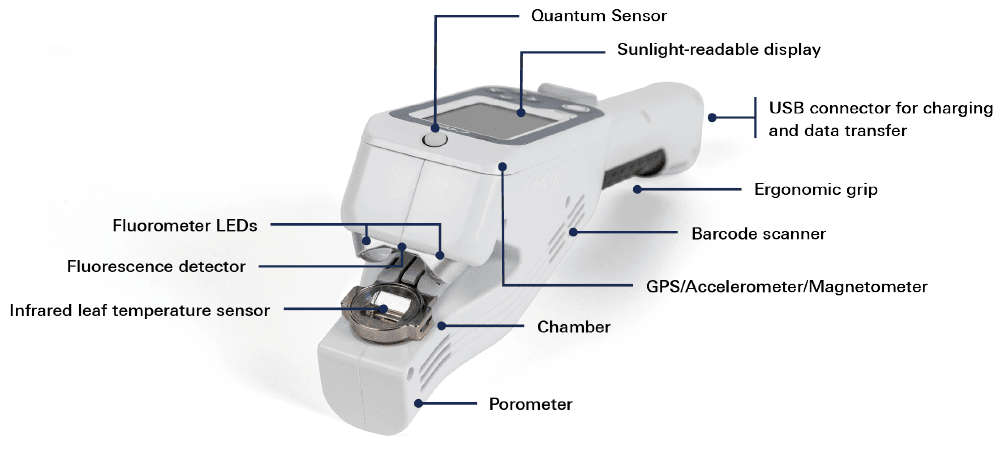For needles, narrow leaves, and grasses
The LI-600N Porometer/ Fluorometer is the only instrument specifically optimized to measure the stomatal conductance and chlorophyll fluorescence of a single needle, narrow leaf, or blade of grass.
Get a QuoteWidth: 1-3.5 mm
Length: minimum 14.2 mm
Thickness: maximum 2.8 mm


The LI-600N is designed to quickly survey needles, narrow leaves, and grasses under ambient conditions.
The LI-600N brings together numerous innovative technologies to deliver fast, accurate, and dependable measurements in a compact, handheld device.
The LI-600N uses an open flow-through differential measurement for quantifying transpiration (E) and stomatal conductance around the needle or narrow leaf. First, E is quantified by measuring the flow rate and water vapor mole fraction of air that enters and leaves the chamber. Meanwhile, total conductance to water vapor (gtw) is computed as a function of E and vapor pressure in the leaf and cuvette. Finally, stomatal conductance to water (gsw) is computed as a function of gtw and the boundary layer conductance to water vapor (gbw).
The advantages of the LI-600N measurement flow path include the following:

Get high-quality, accurate measurements from single needles and blades of grass, even at extremely low conductance.



Return to Overview
BackExperiences
Continue reading